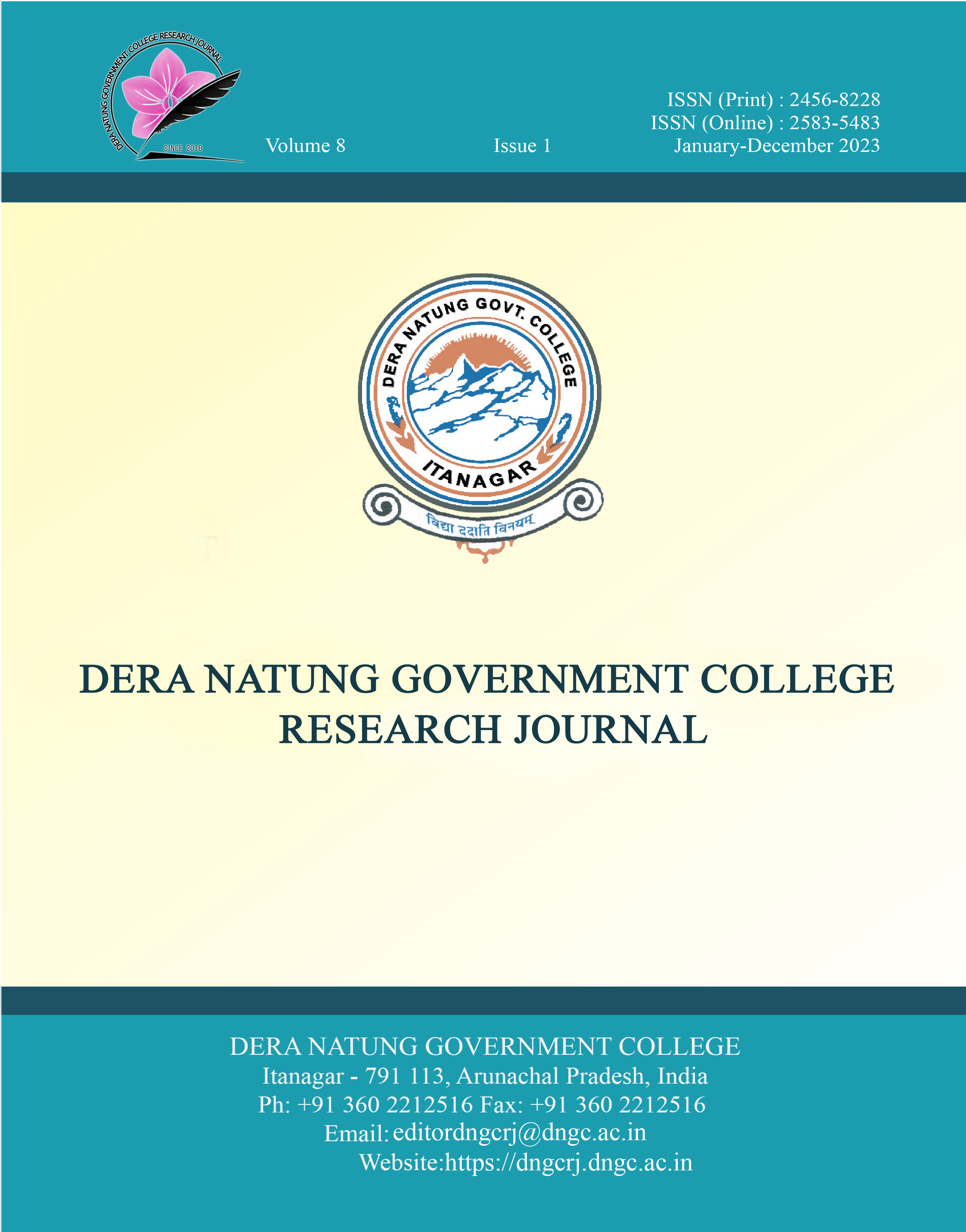Residents’ Perceptions and Outcomes of Community-Based Tourism in Andro Village of Manipur
DOI:
https://doi.org/10.56405/dngcrj.2023.08.01.12Keywords:
Community, Economic Development, Environment, Social Identity, SustainabilityAbstract
Community-based Tourism (CBT) has various impacts on local communities in terms of socio-economic conditions, cultural heritage, environmental safeguards, and overall sustainable development of tourism in the long run. Sustainable development in tourism can be achieved through the independence of local communities and their active participation in tourism activities. Aiming to examine if there is any role of CBT in reaching sustainable goals for tourism, a case study that focuses on the social, economic, environmental and quality of life of the local community of Andro village in Manipur has been taken for study.
The result of the present study was able to indicate the occurrence of Community-Based Tourism in Andro village and it has been able to contribute to the overall sustainable development of the people and tourism activities. There have been diverse benefits to the local residents, which include job creation, local economic development, helping eco-friendly tourism development, community empowerment and preserving the unique cultural and traditional identity of the local community.
Downloads
References
Armstrong, R. (2012). An Analysis of the Conditions for Success of Community-Based Tourism Enterprises (pp. 1-52). ICRT Occasional Paper (OP21).
Ashley, C., Roe, D. (1998). Enhancing Community Involvement in Wildlife Tourism: Issues and Challenges, International Institute for Environment and Development (IIED), UK.
Asker, S., Boronyak, L., Carrard, N., Paddon, M. (2010). Effective community-based tourism: A best practice manual. Sustainable Tourism Cooperative Research Centre, Gold Coast.
Cole, S. (2006). Information and empowerment: The keys to achieving sustainable tourism. Journal of Sustainable Tourism, 14 (6), 629-644.
Connell, J., Rugendyke, B. (Ed). (2008). Tourism at the grassroots: Villagers and visitors in the Asia-Pacific. Routledge, London.
Davis, J.S., Morais, D.B. (2004). Factions and Enclaves: Small Towns and Socially Unsustainable Tourism Development. Journal of Tourism Research, 43 (1), 3-10.
Hall, C.M. (2000). Tourism Planning; Policies Processes and Relationships. Prentice Hall, Harlow.
Harrison, D. (2004). Working with the Tourism Industry: A case study from Fiji. Social Responsibility, 1 (1-2), 249-270.
Hiwasaki, L. (2006). Community-Based Tourism: A Pathway to Sustainability for Japan's Protected Areas. Society and Natural Resources, 19 (8), 675-692.
Imphal East District. (2022). Santhei Natural Park. https://imphaleast.nic.in/tourist-place/santhei_natural_park/. Accessed on 19.03.23
Indian Village Directory. (2015). https://villageinfo.in/manipur/imphal-east/keirao-bitra/andro.html. Accessed on 20.04.23
Mason, P. (2020). Tourism Impacts, Planning and Management, 4th Edition. Routledge, London.
Masurkar, B. (2021). Andro- Distinct Tribal Village in Manipur. https://www.tripoto.com/india/trips/andro-ancient-scenic-village-in-manipur-indian-women-footballers-paradise-612b9b6fc182c Accessed on 25.04.23
Mathieson, A., Wall, G. (1982). Tourism: Economic, physical, and social impacts. Longman, London, New York.
Mc Cool, S.F., Moisey, R.N., Nickerson, N.P. (2001). What should Tourism Sustain? The disconnect with Industry Perception of Useful Indicators. Journal of Travel Research, 40 (2),124-131.
Milne, S. (2006). Baffin Island, Nunavut, Canada. In G. Baldacchino (Ed). Extreme tourism: Lessons from the world’s cold-water islands. 89–100. Elsevier, Oxford.
Mitchell, R.E., Eagles, P.F.J. (2001). An Integrative Approach to Tourism: Lessons from the Andes of Peru. Journal of Sustainable Tourism. 9 (1), 4-28.
Murphy, P.E. (1985). Tourism: A community approach. Methuen, New York.
Neto, F. (2002). Sustainable Tourism, Environmental Protection and Natural Resource Management: Paradise on Earth? The International Colloquium on Regional Governance Sustainable development in Tourism Driven Economies, Mexico.
Pratt, B., Loizos, P. (1992): Choosing Research Methods: Data Collection for Development Workers. Oxfam, Oxford.
Saarinen, J. (2006). Traditions of Sustainability in Tourism Studies. Annals of Tourism Research, 33 (4),1121-1140.
Stiglitz, J. (2002). Participation and development: Perspectives from the comprehensive development paradigm. Review of Development Economics, 6 (2), 163-182.
Stone, C. (2012). Community Engagement in Sustainable Tourism Development for Local Products. Palermo Business Review, Manchester Metropolitan University.
Tamir, M. (2015). Challenges and Opportunities of Community based Tourism Development in Awi Zone: A Case Study in Guagusa and Banja Woredas, Ethiopia. Journal of Tourism, Hospitality and Sports, 11, 50-78.
Trejos, B., Chiang, N. (2009). Local economic linkages to community‐based tourism in rural Costa Rica. Singapore Journal of Tropical Geography, 30 (3), 373-387.
UNWTO. (2013). Sustainable Tourism for Development Guidebook. First edition. UNWTO. https://www.researchgate.net/publication/287254875_Tourism_Impacts_Planning_and_Management. Accessed on 30.04.22
Downloads
Published
How to Cite
Issue
Section
License
Authors who publish with this journal agree to the following terms:
- Authors retain copyright and grant the journal right of first publication with the work simultaneously licensed under a Creative Commons Attribution 4.0 International License that allows others to share the work with an acknowledgement of the work's authorship and initial publication in this journal.
- Authors are able to enter into separate, additional contractual arrangements for the non-exclusive distribution of the journal's published version of the work (e.g., post it to an institutional repository or publish it in a book), with an acknowledgement of its initial publication in this journal.
- Authors are permitted and encouraged to post their work online (e.g., in institutional repositories or on their website) prior to and during the submission process, as it can lead to productive exchanges, as well as earlier and greater citation of published work.







